KTM 390 Adventure vs Royal Enfield Himalayan – Shootout
We pitch the leading adventure tourers against each other to see which comes out on top!
We pitch the leading adventure tourers against each other to see which comes out on top!
Home » Bike News » KTM 390 Adventure » KTM 390 Adventure vs Royal Enfield Himalayan – Shootout
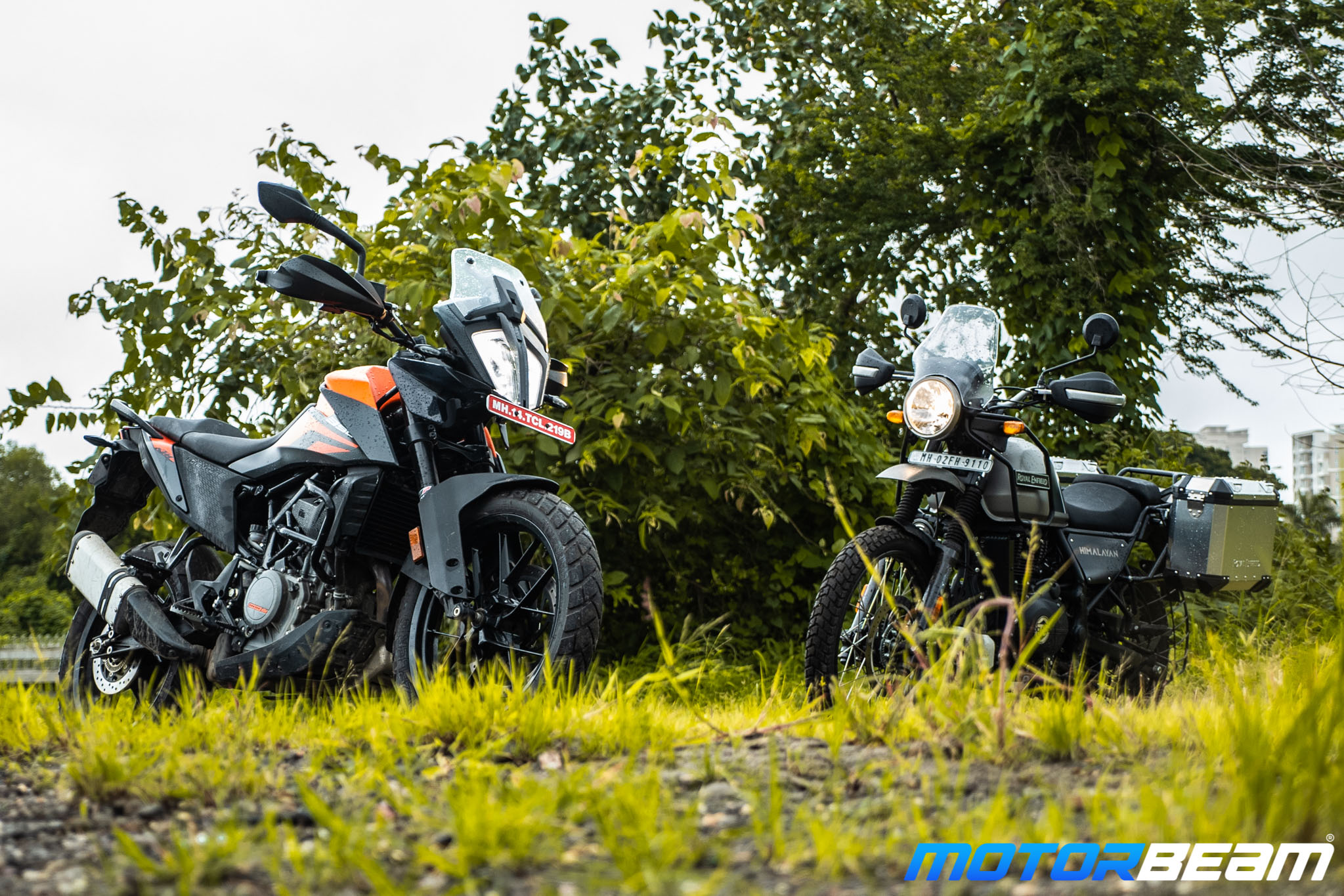
Shootout No. 241
Price OTR Mumbai: Rs. 3,58,900/- (KTM 390 Adventure); Rs. 2,38,165/- (Royal Enfield Himalayan)
The RE Himalayan has seen a few updates for BS6 to bring it at par with the new 390 Adventure
Royal Enfield unveiled the Himalayan in 2016, and it took the 2-wheeler market by storm primarily because it was the only affordable adventure tourer bike in India. There was no direct rival to it then, but 2020 has had various shades and sadly for the Himalayan, it is orange. KTM recently launched its smallest ADV offering, the 390 Adventure in India, and it packs a lot of punch. This has also pushed RE to update the Himalayan, and for BS6, it has definitely gotten better than before. But is it better than the 390 Adventure? We try to find out exactly this in our shootout between the KTM 390 Adventure and the updated RE Himalayan.
Motor Quest: The RE Himalayan came to market in 2016 and it has received two updates since, one for BS4 and another for BS6. Both these updates showed us that RE has been listening closely to the customers and consequently, the bike has become more user friendly and likeable. Whereas, the KTM 390 Adventure is the new kid on the block which offers more features, better looks, and much better performance out of the box and aims at putting a dent on the Himalayan’s sales.
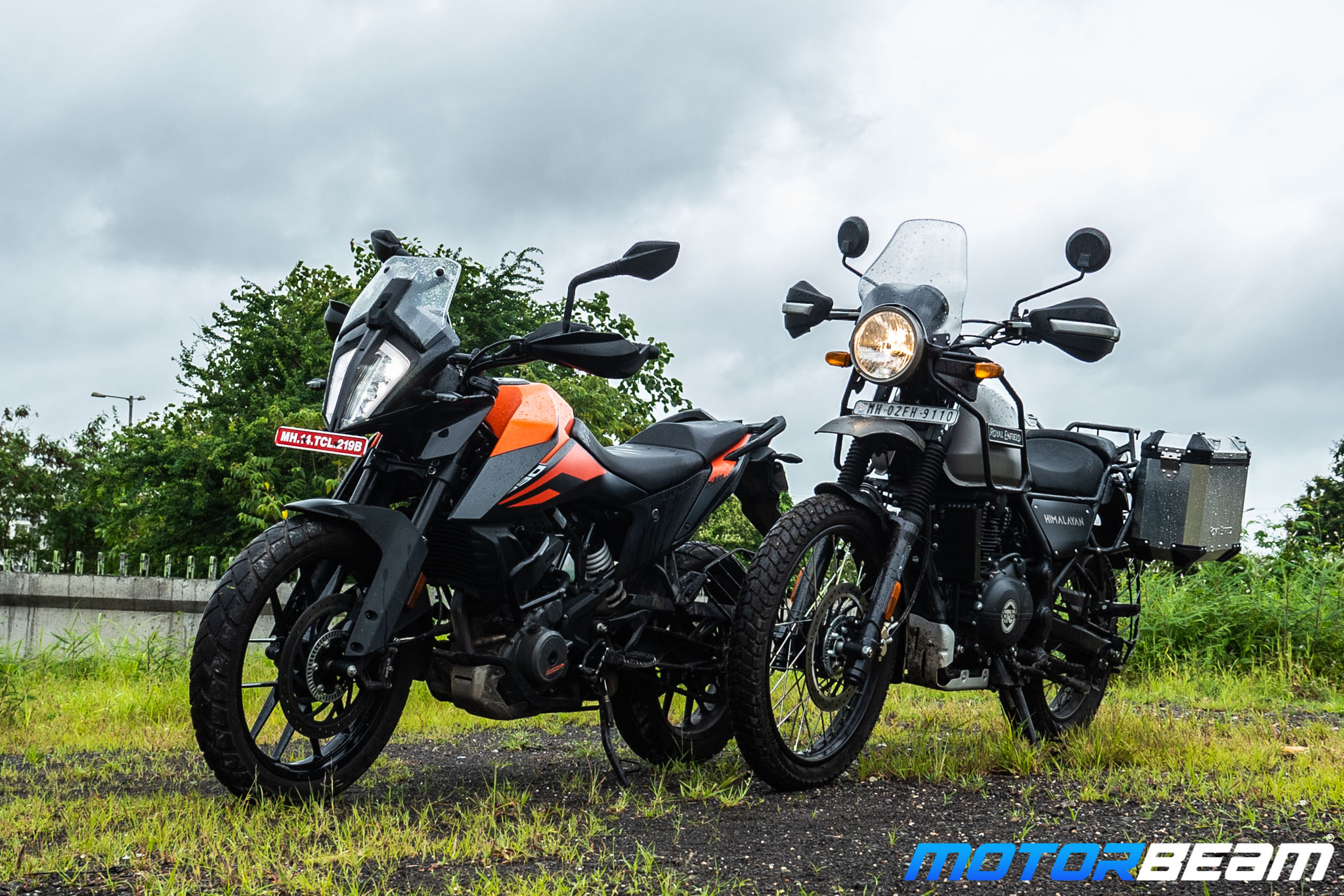
Styling: Both bikes look suitable for the segment they belong to, but both manufacturers have chosen different paths to attain this. On one hand, the Royal Enfield Himalayan looks raw and offers a no-nonsense design. The tall stature, long mudguard, and the tall windscreen all make the Himalayan look pretty purpose-built. It misses out on some modern bits like LED lighting and alloy wheels, though. On the other hand, the KTM 390 Adventure takes inspiration from the radical 790 Adventure and looks far more modern and premium than the Himalayan.
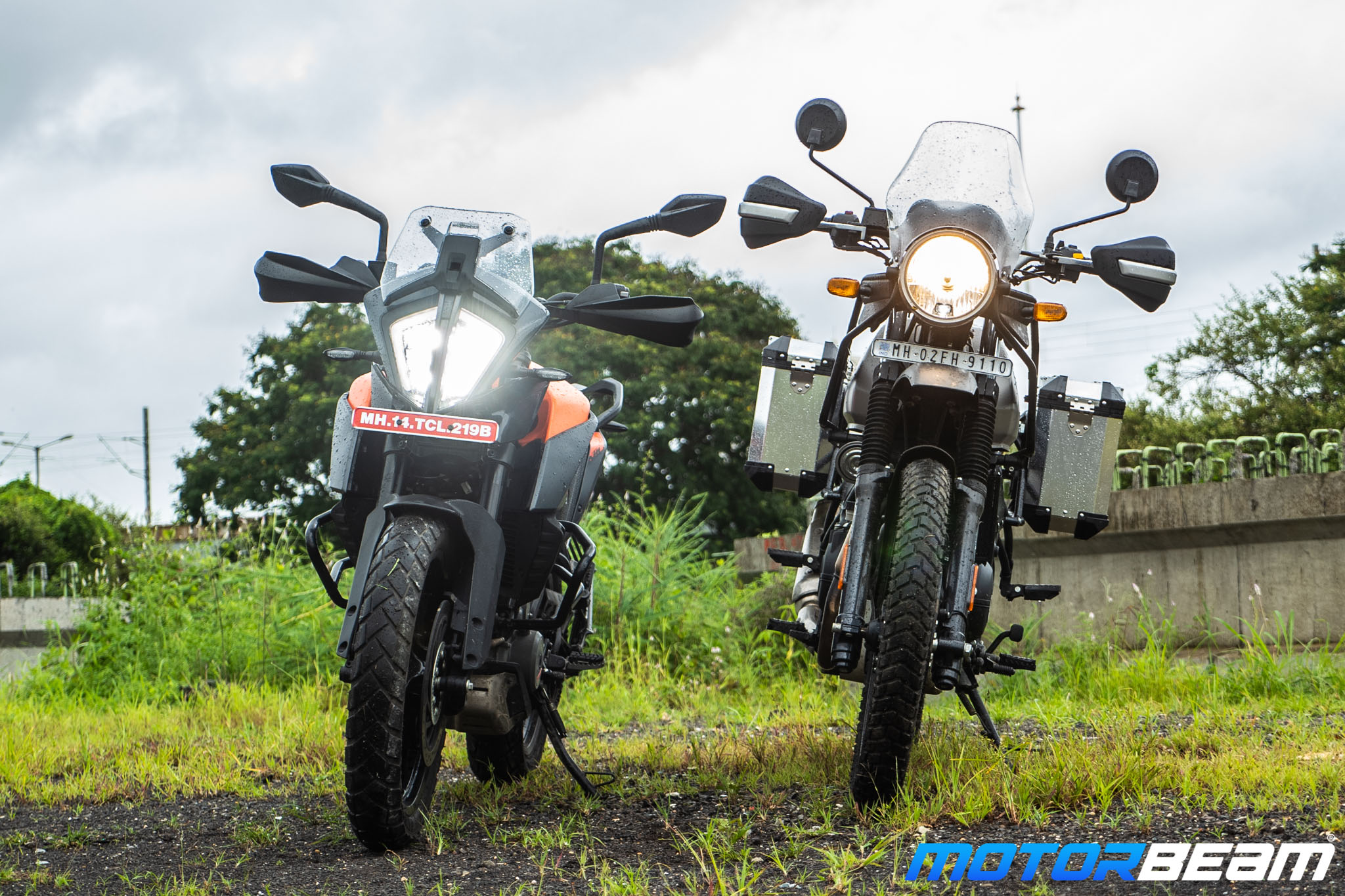
The signature orange paint of the 390 Adventure makes it really hard to miss in a crowd
The panels, LED headlamp, tail light, and mirrors look much more modern as well. The KTM also gets alloy wheels, which might seem less purposeful to enthusiasts, but they add to the appeal of the Adventure. There are not a lot of colours to choose from for both bikes, though, but both have good presence nevertheless, thanks to their big size. All in all, we think the KTM 390 Adventure is definitely the better-looking bike here, but the Himalayan looks more rugged in comparison.
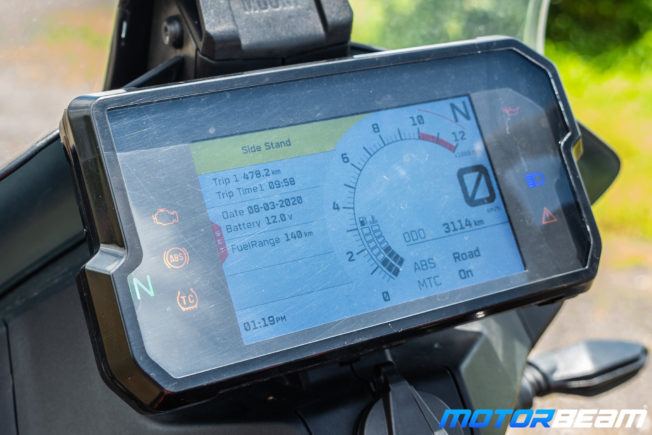
Instrument Cluster and Switchgear: Like the styling, the story remains similar here as well. The Himalayan gets a semi-digital instrument cluster. The speedometer, tachometer and the fuel gauge are all analogue, while an LCD display underneath the speedo displays the fuel range, temperature, time and gear. For BS6, the Himalayan has also received an ABS switch which lets you turn off the ABS at the rear. The setup is neat by RE standards, but the KTM is a step ahead. The 390 Adventure gets a big TFT display similar to the Duke 390, which displays a lot of information. The package includes ABS modes, Traction Control settings, connectivity features and even quickshifter controls along with the standard stuff.
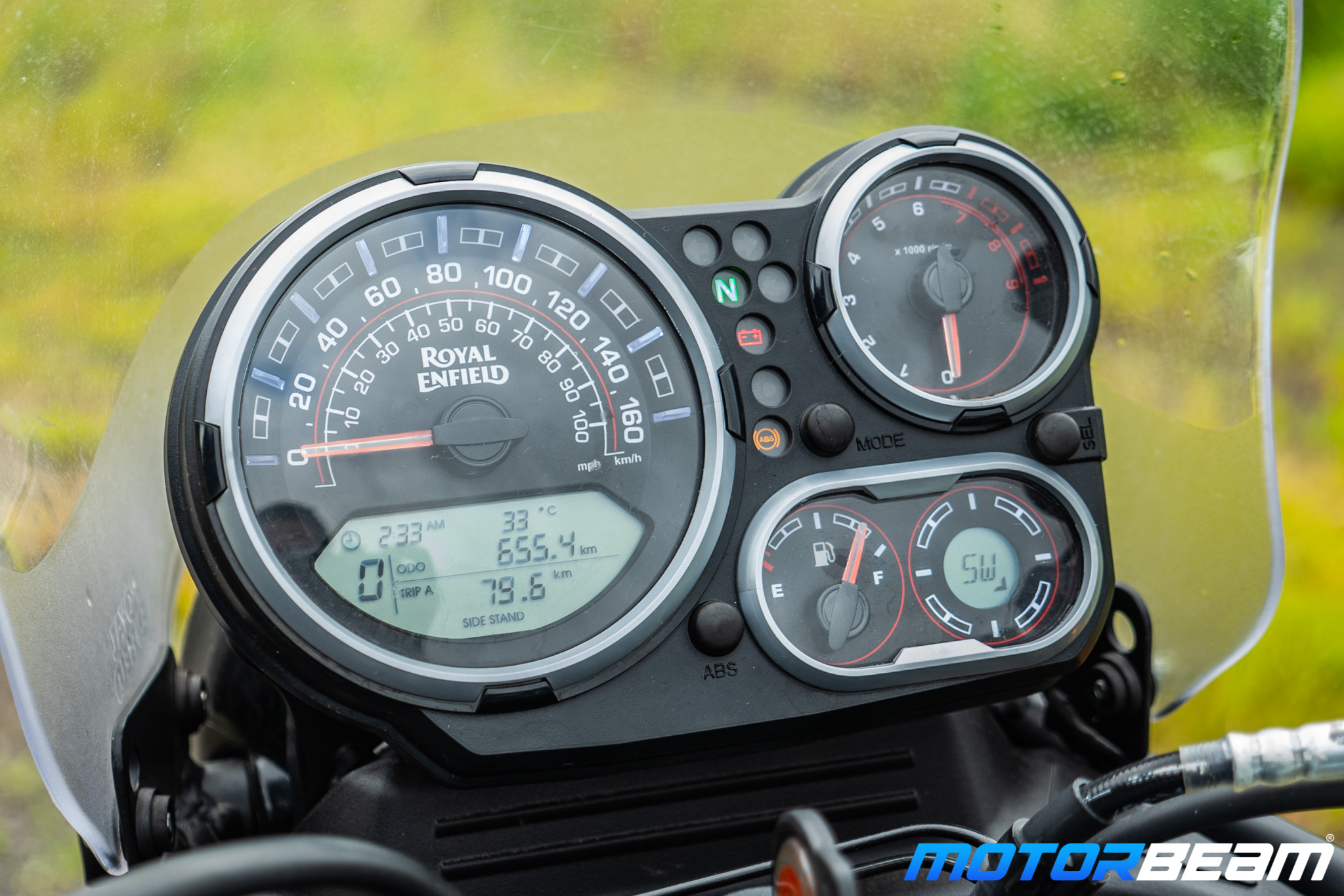
Both bikes have good instrument clusters, but the 390 Adventure is much more technologically advanced
Moving on, the switchgear quality is decent on both motorcycles but the haptic feedback is better on the 390 Adventure and the switchgear is backlit too. Additionally, the 390 ADV also has an optional mount present to mount the GPS device right between the windscreen visor and the digital console. The only additional features in the RE Himalayan over the 390 ADV here are the hazard light switch and the digital compass. To summarise, the 390 Adventure definitely comes out on top in this segment, thanks to the class-leading features on offer.
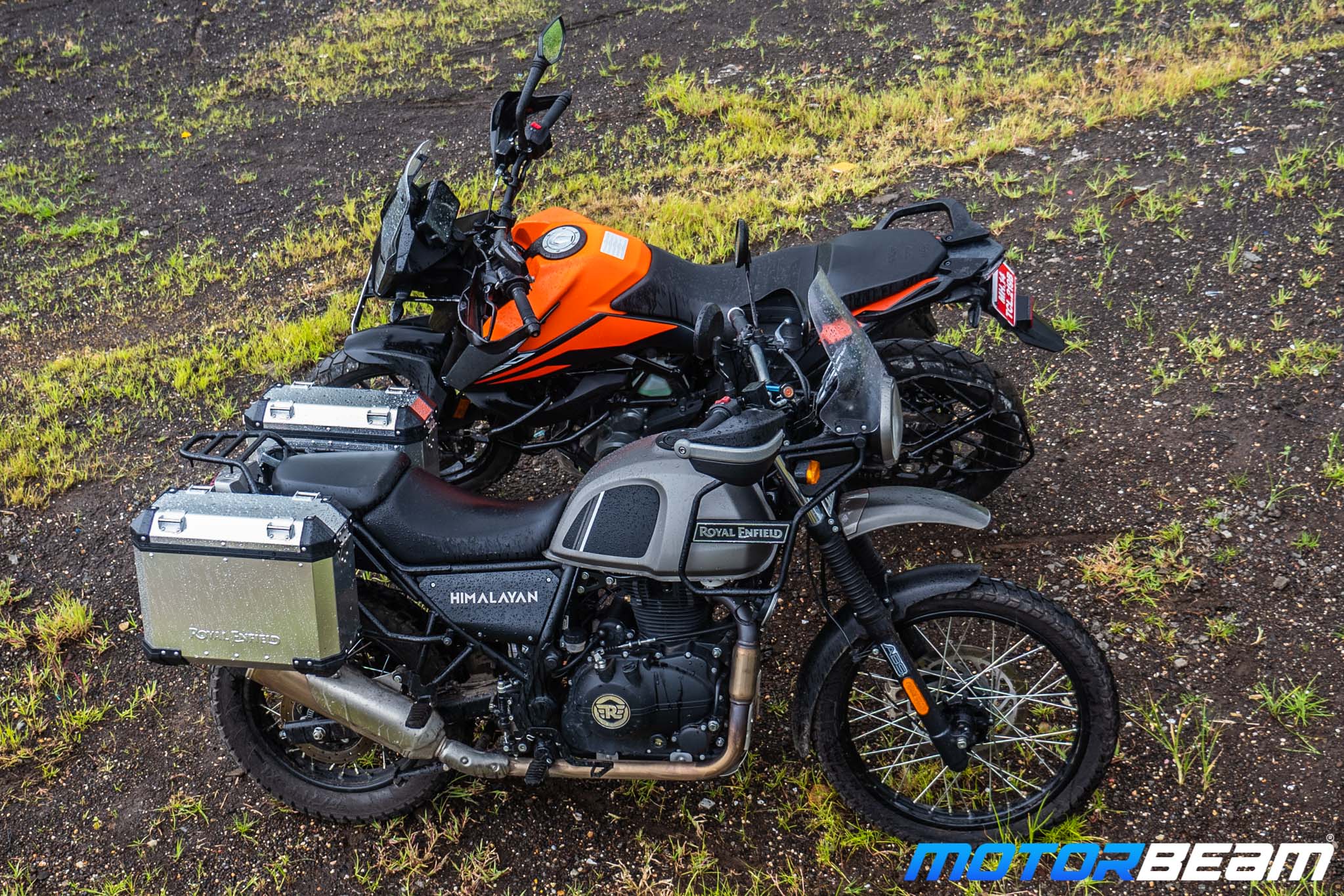
Ergonomics: The ergonomics are one of the USPs of the RE Himalayan and make it a very comfortable bike. The seat height is very accessible for the masses at just 800 mm and coupled with the tall handlebars, the resulting posture is pretty upright and comfortable. The 390 Adventure is also a comfortable bike and offers an upright posture too. The main problem with it, though, is the 855 mm seat height, which makes it unsuitable for shorter riders. Both bikes offer split seats and good cushioning, but the Himalayan’s seat feels squished over long rides. However, while both bikes are suitable for standing while off-roading and get toothed pegs with rubber inserts, the Himalayan’s tank lets you lock your legs better. Lastly, both bikes have decent mirrors, but the 390 Adventure provides a better field of view and vibrate less.
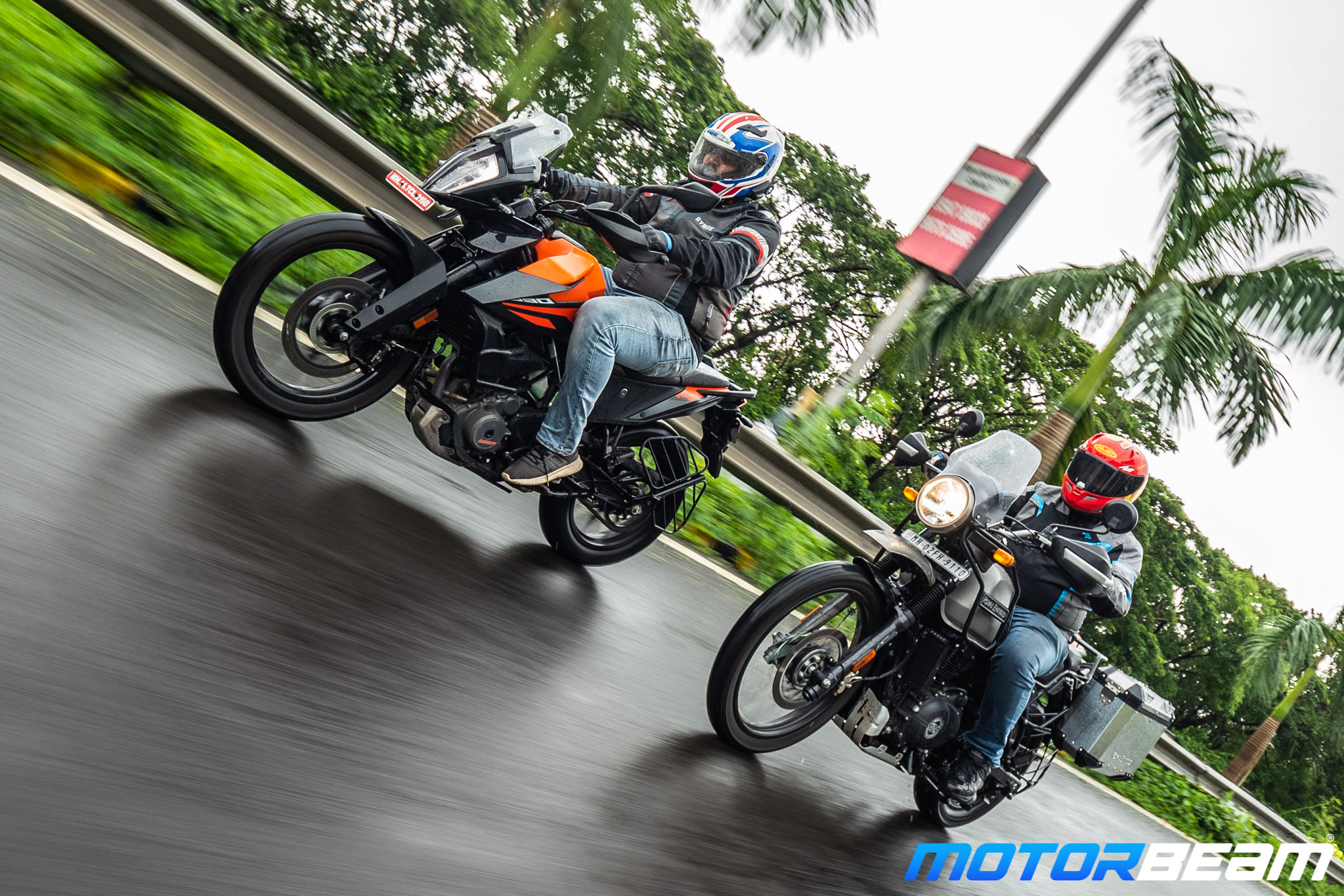
Performance: Covering up the common bits first, both bikes are single-cylinder, get fuel injection as standard, and are BS6 compliant. Talking numbers, the RE Himalayan gets a 411cc motor which makes 24.3 BHP and 32 Nm of torque. The 390 Adventure has a smaller 373cc motor from the Duke 390 but makes 42.3 BHP and 37 Nm of torque. Not to forget, the 390 Adventure also gets Traction Control, which is a first-in-segment. The ball is definitely in the 390 Adventure’s court here, as it makes almost twice as much power as the Himalayan and has better electronic aids. Consequently, the 390 Adventure is much faster than the Himalayan to a ton and has a higher top-speed too.
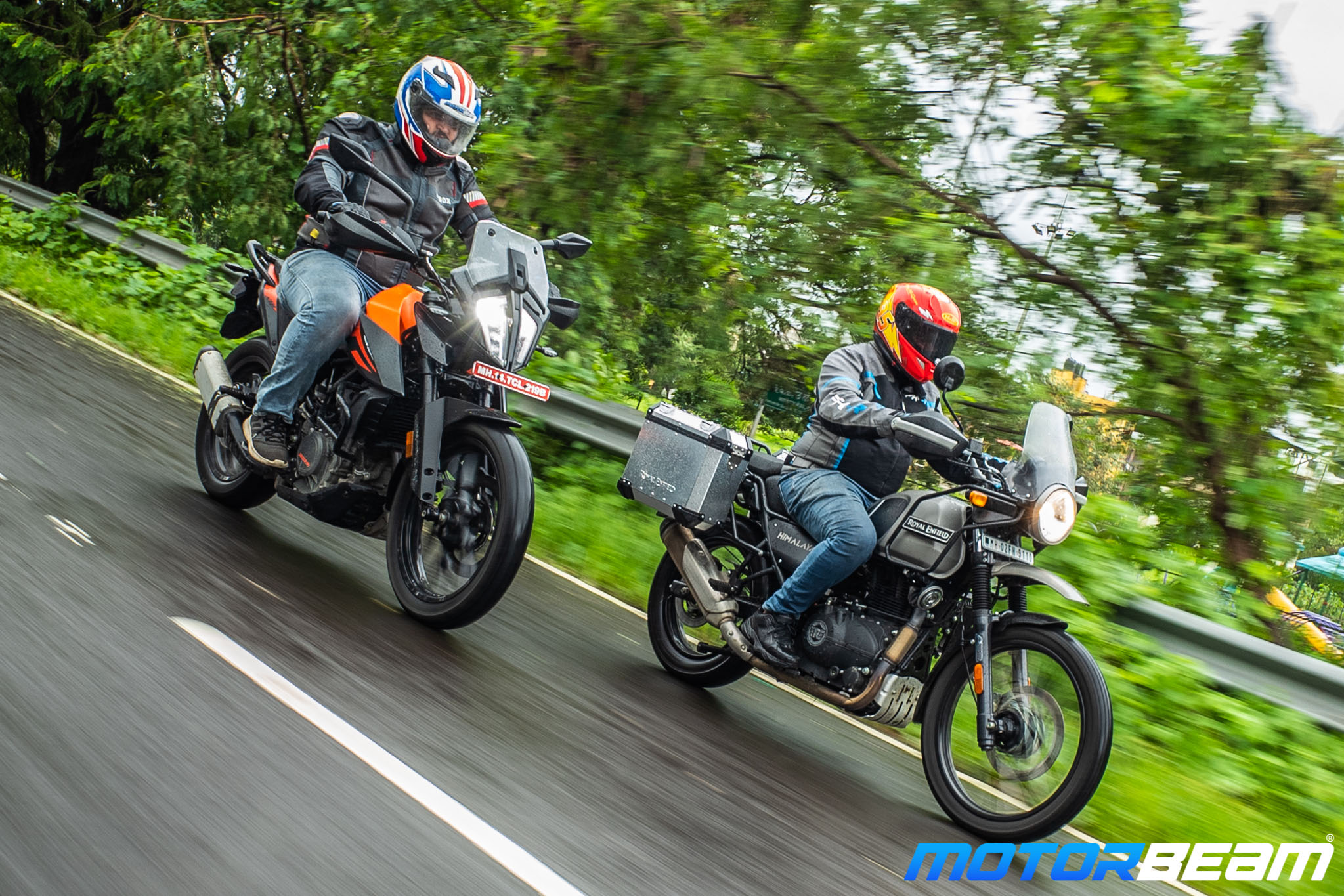
Both motors feel smooth and can easily cruise at high speeds
The 390 Adventure also feels punchier, as the Himalayan has a more linear power delivery. Further, the 390 Adventure scores bonus points, as it gets a 6-speed gearbox with a bi-directional quick-shifter and a slipper clutch as standard, while the Himalayan gets a standard 5-speed one. However, the Himalayan is more suitable for new riders as the power delivery is friendlier and the fuel efficiency, as well as the range, is much more than the 390 Adventure too. Coming to refinement, both bikes are pretty refined, but vibrations do creep in once you start pushing them to the redline. Heating issues are bare minimum on both too. In conclusion, if power is your top priority, like all other KTM 390s, the 390 Adventure should be your pick.
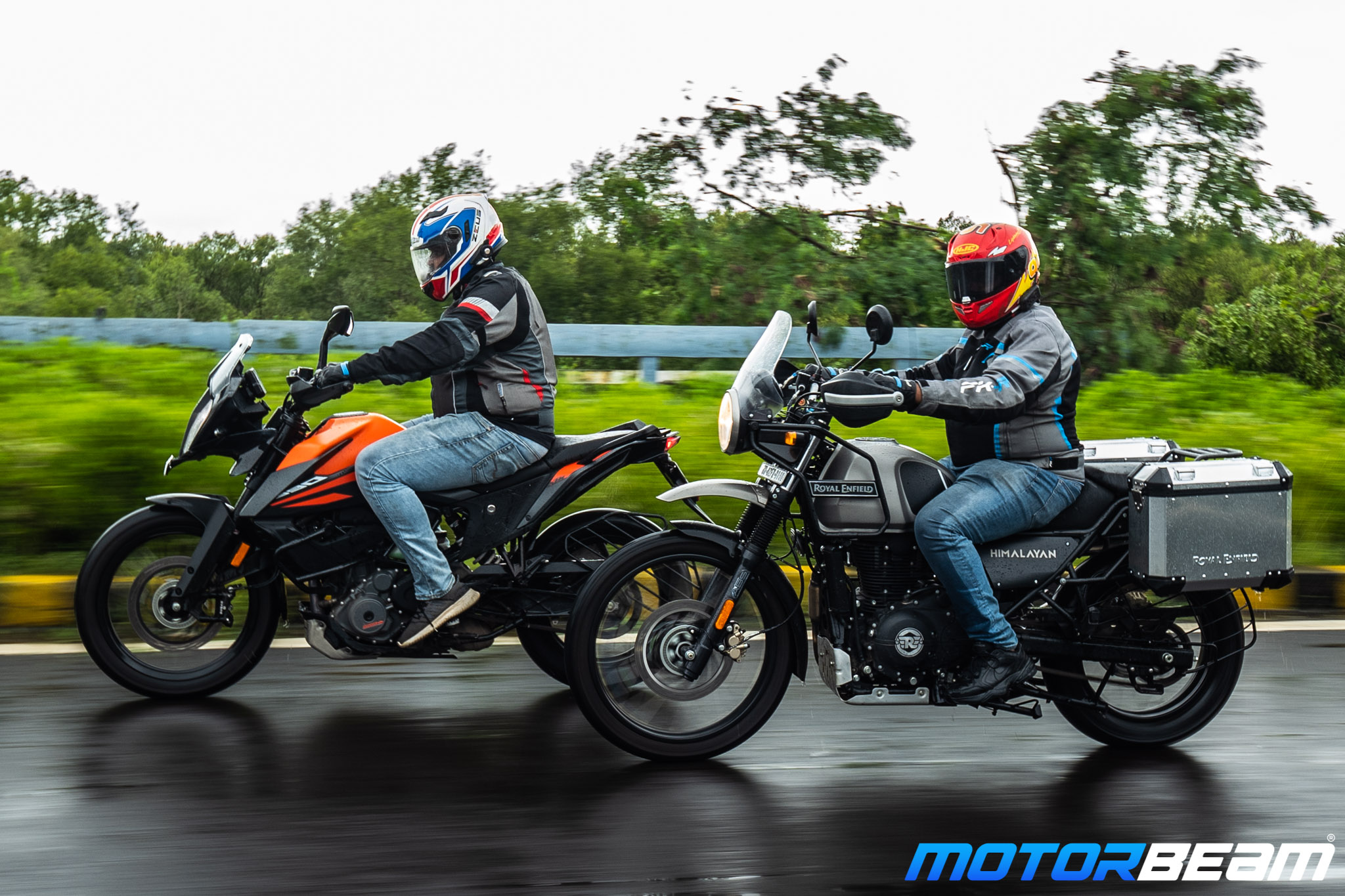
Riding Dynamics: Both bikes offer comfortable riding postures, tall suspensions, and big tyres, yet both feel very different to ride. Talking about the Himalayan first, the riding dynamics are slow and the bike doesn’t respond well to spirited riding. The front end feel isn’t too great too on the road. On the flip side, the suspension setup and the tall handlebars make it an excellent motorcycle for off-road duties. The weight was high as it is and it has increased by 5 kgs following the BS6 update. This has made the Himalayan a little tougher to tussle around, but the difference isn’t too drastic.
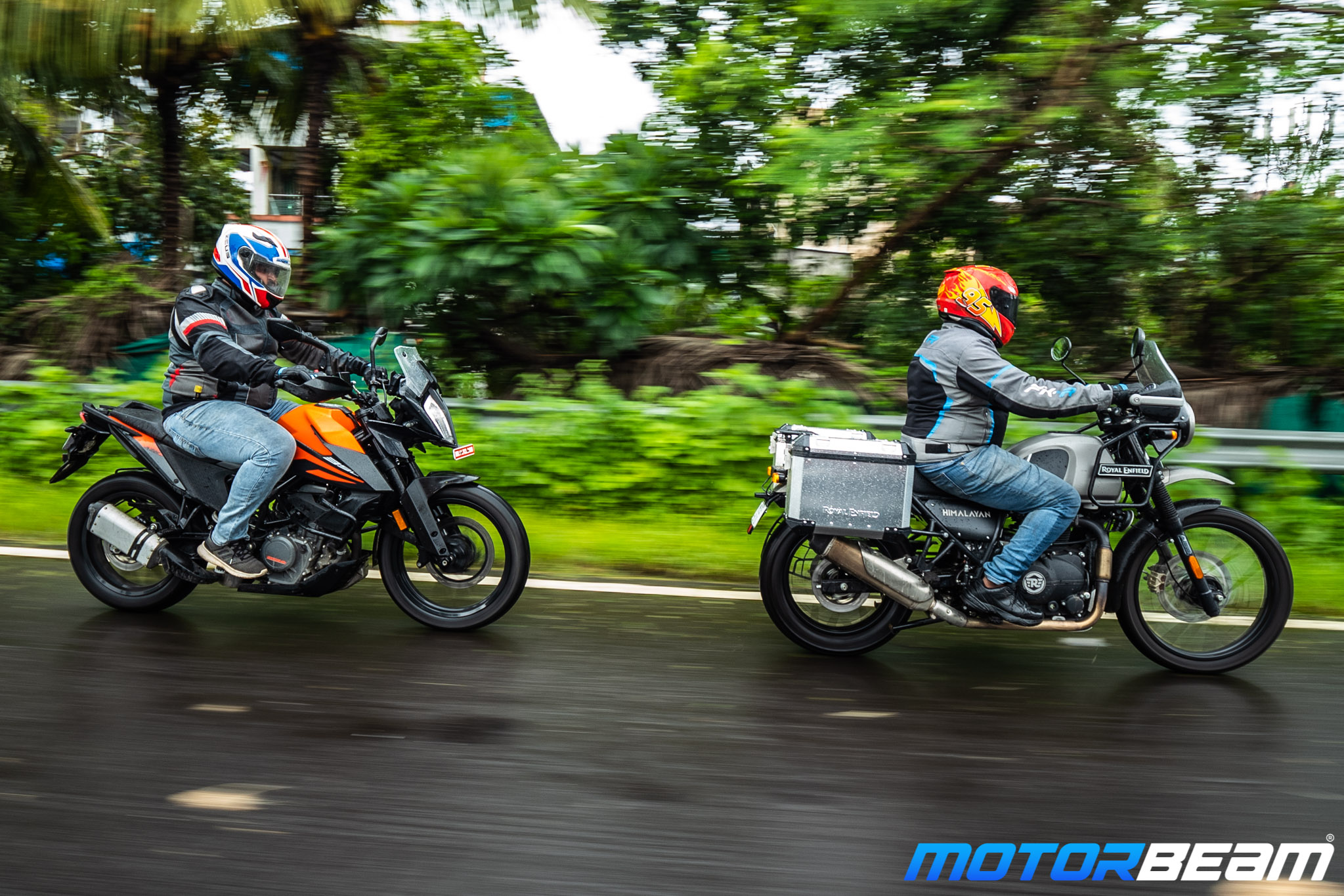
While the Himalayan feels at home on rough terrain, the 390 Adventure feels at home on the road, thanks to road biased tyres
Coming to the 390 Adventure, it is a much more premium setup than the Himalayan. It gets WP Apex suspension at both ends and a modified trellis frame similar to the one on the Duke 390. Consequently, the 390 Adventure tips into corners well and agility and stability haven’t gone for a toss either. The suspension setup is also soft and ideal for city duties. Braking has improved on the Himalayan for BS6, but it doesn’t come close to the braking performance offered by the KTM. Moreover, the Himalayan is 20 kgs heavier than the 390, which doesn’t help its case too. The 390 also gets grippier Metzeler rubber, which feels road-biased as compared to the off-road-biased CEAT rubber on the Himalayan. Also, the KTM gets Cornering ABS as standard, which lets you attack corners with even more confidence.
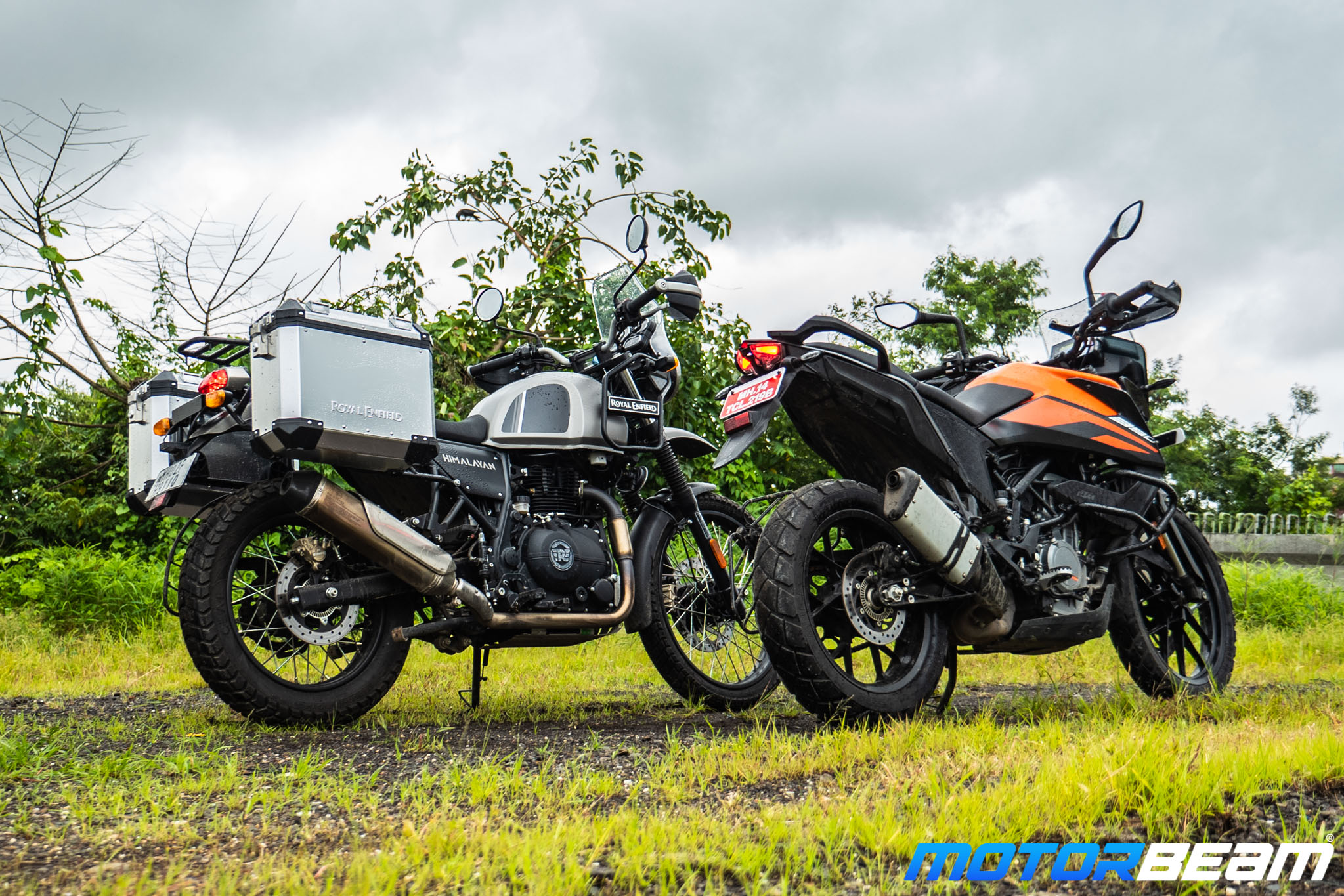
Verdict: The Royal Enfield Himalayan costs Rs. 2,38,165/- while the KTM 390 Adventure costs Rs. 3,58,900/- (both prices, on-road Mumbai). The difference in prices is about Rs. 1.2 lakhs, which is a hefty sum. For the extra Rs. 1.2 lakhs you spend; you get a bike with more power, premium features, better safety, better looks and better equipment. This doesn’t mean the Himalayan isn’t a great bike, though. It is one of the best touring/enduro motorcycles you can buy. It continues to offer great comfort and rider-friendly ergonomics. To conclude, if you’re an experienced rider and budget is not an issue, the 390 Adventure should definitely be your pick. But if you are someone who plans on starting off-roading, are on a budget and aren’t crazy about tech/numbers, the Himalayan definitely makes a very strong case.
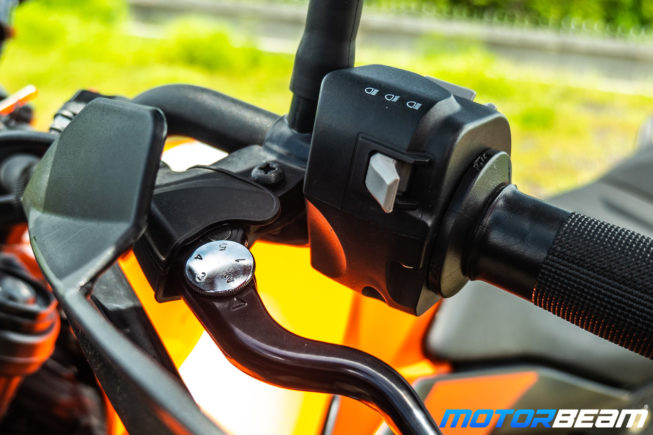
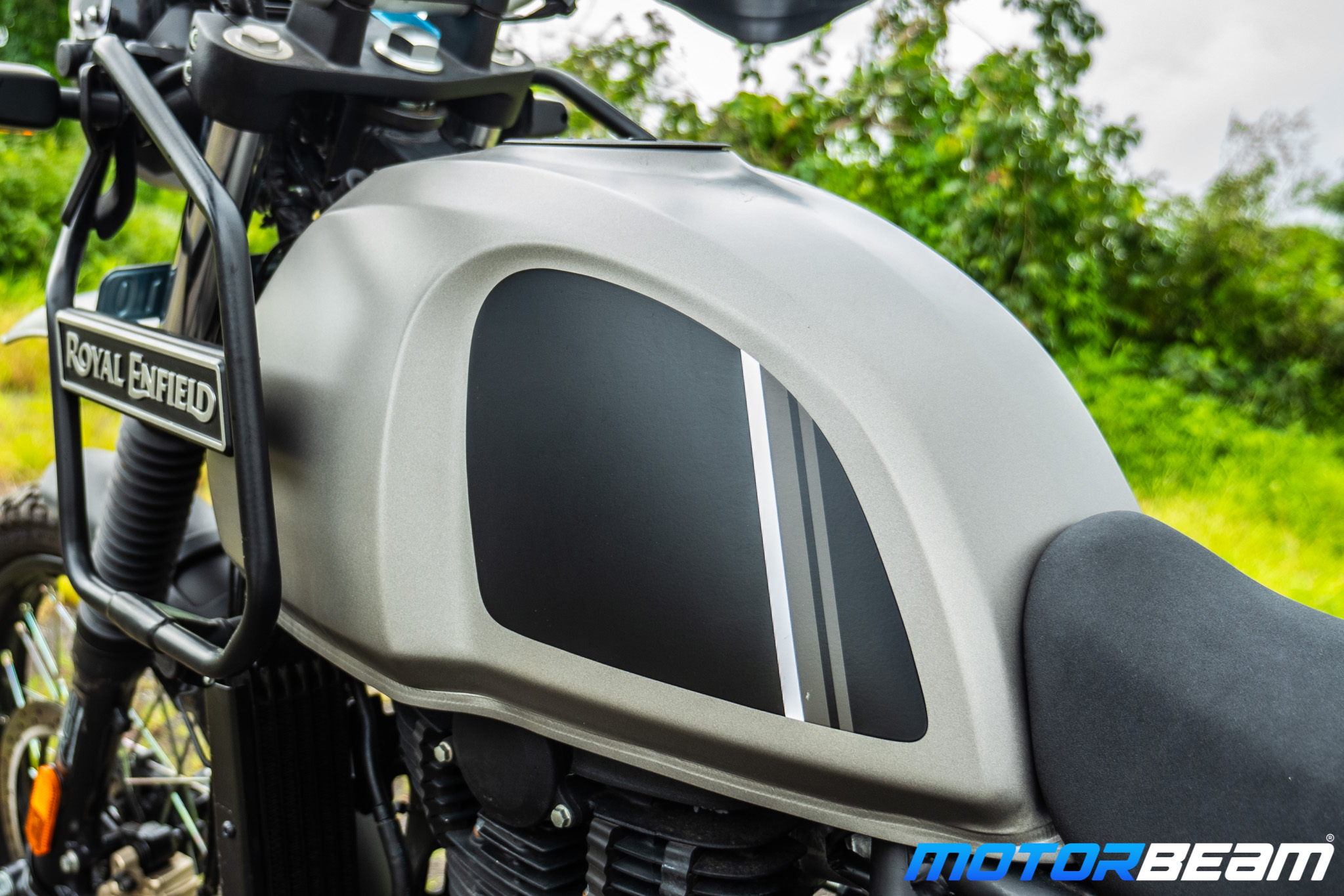
Further reading-
RE Himalayan Review
KTM 390 Adventure Review
